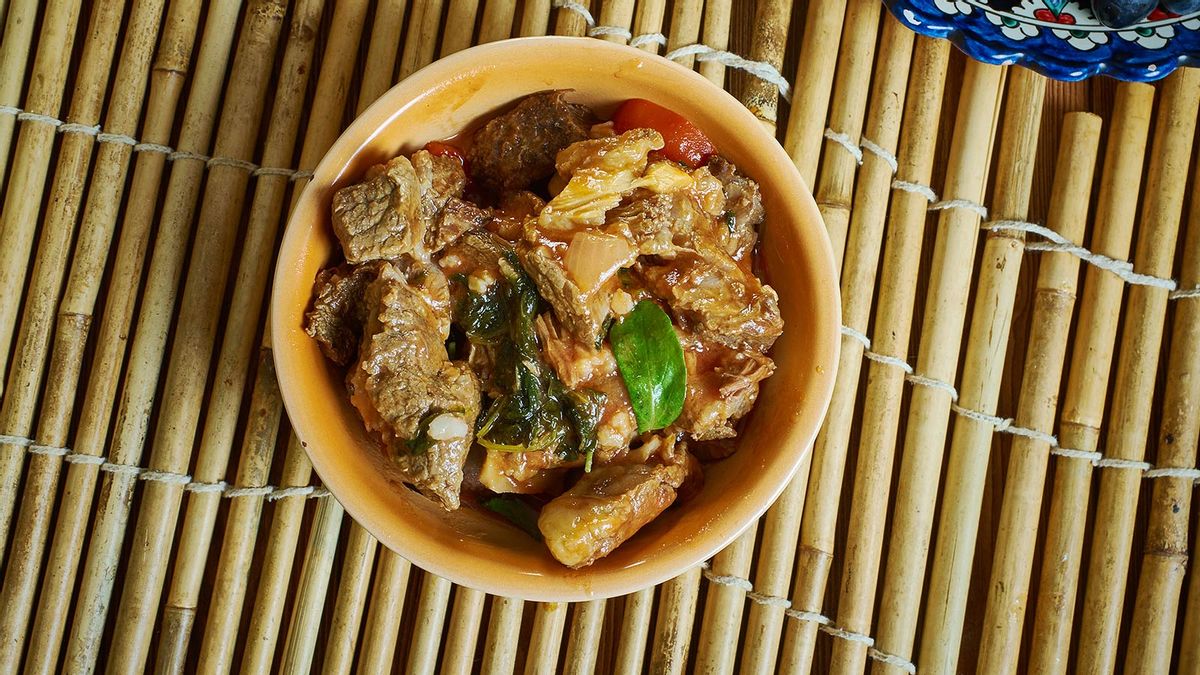Like every Bengali, Durga Pujo delicacies will always hold a special place in my heart. Apart from the Bhog (food offered to the deity and then consumed by the devotees), there is a variety of vegetarian and non-vegetarian Bengali fare at the various food stalls that line a typical pujo pandal.
There are egg and fish cutlets, seasonal veggies dipped in besan and fried like pakodas, muri ghonto (fried fish head), prawn malai curry, the classic shorshe illish or Hilsa fish curry—redolent with the flavours of the Hooghly, cooked in hand-ground mustard sauce—to name a few. The secret of Bengali cooking is in its seasonal ingredients and sheer, homely simplicity.
Bengal’s Kosha Mangsho affair
But undoubtedly, the pride of place has to go Kosha Mangsho, a distinctive Bengali-style mutton curry. While Mangsho stands for mutton, Kosha means slow-cooked or fried for a long time with ground and whole spices over high heat. In a Bengali household, the very mention of mutton inevitably brings on excitement, because unlike chicken or fish, kosha mangsho is expensive and cooked only on special occasions, Sundays or during festivals.
It’s a leisurely preparation that requires time and patience. What with the mutton being marinated in curd overnight with ginger-garlic, coriander and cumin seeds, turmeric, kasoori methi and Kashmiri red chillies. Salt is not added at this stage, allowing the marinade to mesh with the meat completely. Adding salt would make water and masala evaporate from the meat, compromising the flavours to an extent. The mutton is then slow-cooked and fried in mustard oil which gives this Bengali delicacy its unique taste.
Kosha Mangsho pairs best with
You could eat Kosha Mangsho with rice or parathas. I would recommend hot, hot Luchis—those golden balls of fried perfection—typical of our region. Unlike puris, Luchis are made of maida or refined flour, which gives it an elasticity that makes scooping the juices easy. Kosha Mangsho can also be accompanied by aloo bhaja—or fried potato fingers—a universal favourite.
Kosha Mangsho can be as spicy or mild as you choose to make it. The accent is on fresh ingredients and whole spices. For me, Kosha Mangsho is one preparation that is synonymous with tradition and my roots. It is a comforting throwback to my childhood, and despite being married to a non-Bengali, I make it a point to cook it every now and then for my son Aurmaan, just the way my mother used to make it for me.
Here's a recipe for Kosha Mangsho—straight from Ma’s kitchen.
Ingredients
- 500 gm fresh mutton
- 6 tbsp of mustard oil
- 2 tsp of whole garam masala (cardamom, cinnamon, cloves) and bay leaves
- 4 – 5 slit green chillies
- 2 potatoes cut in half
- 3 red onions ground to paste or finely chopped
- Paste of 1 tomato
- 2 tbsp of ginger paste
- 1 tbsp of garlic paste
- Mutton marinade paste, kept overnight
- 3 tsp curd
- 2 tsp chilli powder
- 2 tsp garam masala powder
- 2 tsp jeera powder
- 1 tsp sugar
- 1/2 tsp turmeric
Note: Bengali cooking does not use too much garlic . If you are using both garlic and ginger, then ginger should be twice the amount of garlic.
Method
- Heat the oil in a karahi or a pan, saute the whole garam masala, green chillies and bay leaves in the heated ghee/ oil.
- Once the spices crackle, add the onion paste. Keep stirring till the onions become brown and begin to stick. Add sugar to get a nice caramel colour.
- Add the ginger and garlic pastes and stir the mixture till it begins to darken and tightens.
- Add the tomato puree and let it cook till it is dark brown.
- Add the marinated mutton and potato, salt and stir the mixture together for about 5 minutes.
- Add half a cup of water and slow cook for about 30-40 min till the mutton is cooked.
- Serve with luchis, parathas, rotis or pulao.



